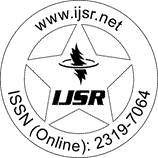Downloads: 122 | Views: 443 | Weekly Hits: ⮙1 | Monthly Hits: ⮙1
Review Papers | Agronomy | Ethiopia | Volume 8 Issue 10, October 2019 | Popularity: 6.5 / 10
Cassava (Manihot esculenta Crantz) Production and Field Management in Ethiopia
Adera Sisay Wassie
Abstract: Cassava (Manihot esculenta Crantz) is a perennial woody shrub with an edible root, which grows in tropical and subtropical areas of the world. It is believed to have been originated in north-eastern and central Brazil and introduced into Africa in the Congo basin by the Portuguese around 1558. Then, it introduced to drought prone areas of southern part of Ethiopia primarily to fill food gap. Cassava is the fourth most important crop for farmers in tropics after rice, wheat and sugar, consumed by up to a billion people globally. It accounts for about 30 % of all staple foods produced in sub-Saharan Africa. However, cassava production in Ethiopia is limited to some areas of southern regions. In these areas, farmers usually grow cassava in small irregular scattered plots either sole or intercropped mainly with taro, enset, maize, haricot beans or sweet potato. This indicates the crop is negligible in Ethiopia and has not been the focus of agriculture policy and extension service despite its ability to provide yield in marginalized land and serving as a buffer against drought shocks. Beside, cassava is becoming increasingly important food crop in declining soil fertility and worsening drought situations. Therefore, this review is intended to show existing field management practices and extension service gap that need to be filled in order to promote the potential of this crop for food security.
Keywords: Cassava production, field management, Ethiopia
Edition: Volume 8 Issue 10, October 2019
Pages: 1254 - 1263
Make Sure to Disable the Pop-Up Blocker of Web Browser
